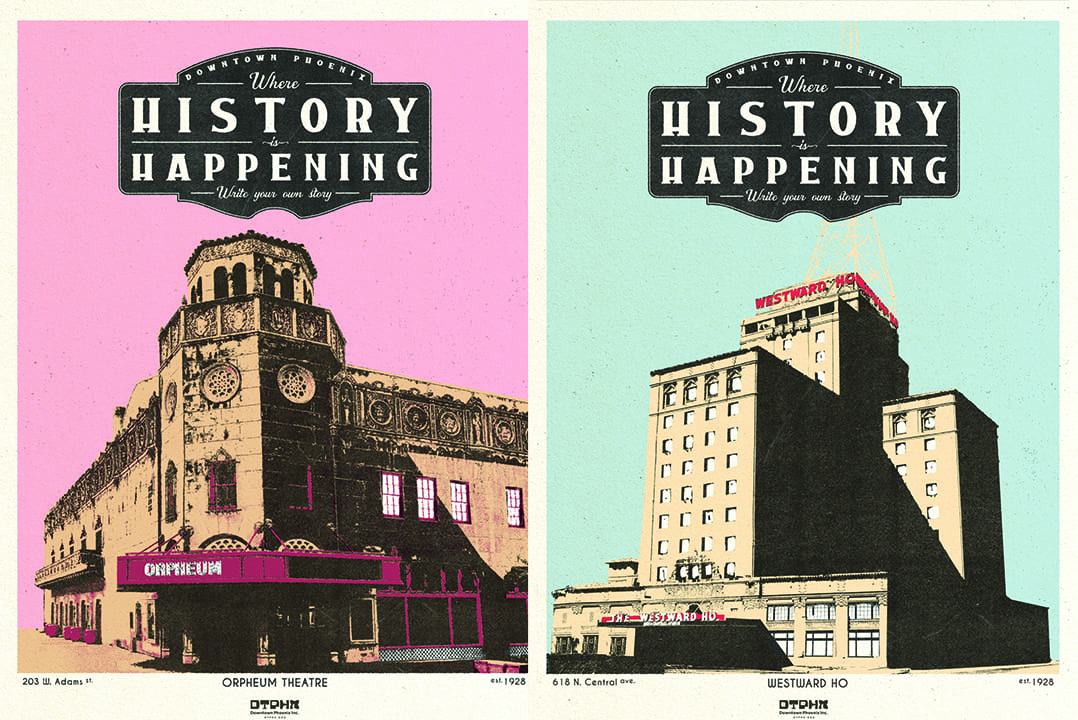In celebration of Historic Preservation Month, and the 150th anniversary of the original townsite — also known as the downtown core — Downtown Phoenix Inc. is inviting the public to share in the stories that made us.
During the month of May, we’ll be diving into our collective past, how we arrived here, who we are today, and how we can all take part in shaping the future.
From its glorious triumphs to infamous blunders, examining downtown’s past can be used as an important guide to writing the future.
With the help of local designer, illustrator and typographer, Quinn Murphy of Hamster Laboratories, we’re launching a pictorial tribute to some of our most beloved historic structures. The series features four iconic buildings — Orpheum Theatre, Rosson House, Westward Ho and New Windsor Hotel — each with a different story. We’ll also be unveiling rare photos, character profiles, tales of restoration, and maybe even a ghost story or two — all month long.

(Design: Quinn Murphy / Hamster Laboratories)
Why celebrate history?
In trying to identify the one thing that’s had the greatest influence on shaping Downtown Phoenix, its culture, people and society — most answers, in some form or another, point toward history.
From an individual’s family lineage to big global events like World War II, there are stories, places, people and events — both large and small — that knit together the social, cultural and economic evolution of the city. Those things made Downtown Phoenix what it is today, and what it will become tomorrow.
Old buildings, sites and districts represent more than just significant locations. They connect people to specific milestones in history, and the ability to revisit these preserved sites, and the memories associated with them, helps create a sense of place and pride.

(Design: Quinn Murphy / Hamster Laboratories)
These things are worthy of preservation.
In a sea of beige stucco, buildings like the Orpheum Theatre, Rosson House, Westward Ho and New Windsor Hotel help set us apart.
Phoenix is known for its car-centric design, sprawl and cookie-cutter developments, resulting in neighborhoods that sometimes lack character, culture and beauty. Now more than ever, it’s important to celebrate downtown’s unique identity through historic preservation.
From an environmental standpoint, retaining the original architecture and character of a building can save in construction materials and reduce waste, but it can also support economic and cultural sustainability.
Over the years, historic preservation and the adaptive reuse of old buildings has attracted significant investment, and boosted revitalization efforts. Using history to promote civic beauty and pride can be a powerful tool to strengthen the local economy, and stabilize property values.
Have a story worth sharing? Email Fara Illich at fillich@dtphx.org, and make sure you sign up for our e-newsletter.



